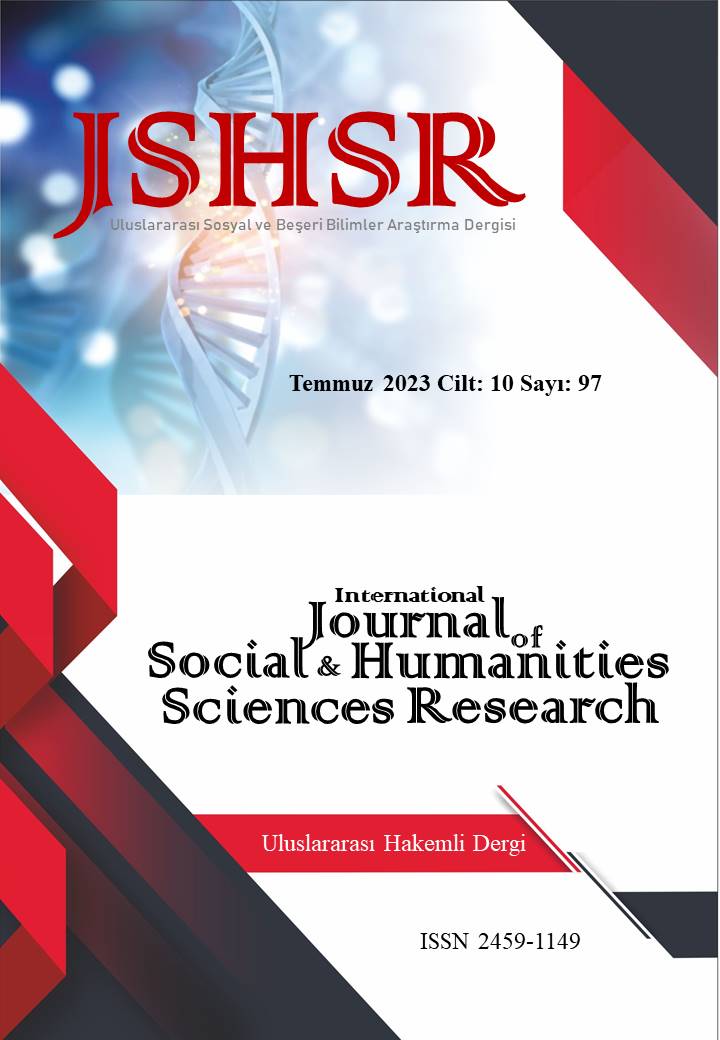Evaluation of Quarry Dusts in Terms of Occupational Health and Safety in an Open Pit Mining Operation
DOI:
https://doi.org/10.5281/zenodo.8196792Keywords:
Dust in the mining industry, Occupational health and safety, Occupational diseaseAbstract
The production method in the mining sector is determined by taking into account the way the ore is deposited in the earth's crust. The mining industry is considered within the scope of very dangerous business lines in the hazard classification. In this respect, it is important to evaluate the risks from a sectoral point of view. In the study, the presence of dust generated during open pit mining activities was evaluated in terms of employees, environment, and machinery equipment. PM10 and precipitated dust parameters were taken into account in the measurements. Dust sampling was used for PM10 with MCZ LVS 1Dust device and PM 10 head, and the gravimetric method was used for precipitated dust. Coal, clay, and sand are extracted in the enterprise where the study is carried out. Coal, clay, and sand are extracted in the enterprise where the study is carried out. The immission points of the measurement made by considering these points and the parameters performed at these points; P-1 (North January), P-2 (January midpoint), P-3 (South January), ÇT-1 (North January), ÇT-2 (South January), ÇT-3 (Area-1), was determined as CT-4 (Area of Influence-2) and measurements were made at these points. Dust, in open pit mine production processes; occurs in processes such as drilling, blasting, loading unloading, crushing, and screening. If adequate health and safety precautions are not taken, it can cause occupational diseases in the long run. Employees can get occupational diseases as a result of long-term exposure to these dusts. In the study, points, where the presence of dust could pose a risk (suspended and settled dust), were determined and measurements were made at these points. Protective and preventive practices for employees, the environment, and machinery-equipment are mentioned, taking into account the measurement results and the limit values specified in the legislation.
References
Atılgan, A, Ersen, N, Peker, H. and Kahraman, N. (2015). Recommendations on the Prevention of Occupational Accidents and Occupational Diseases in the Turkish Furniture Industry. Selcuk Technical Journal, (Special Issue 1), 664-683.
Babalık, F.C. (2007). Ergonomics for Engineers. Nobel Publication Distribution.
Bulut, G. & Göktepe, F. (2012). Chemicals Used in Mining and Mineral Processing. Journal of Eskişehir Osmangazi University Faculty of Engineering and Architecture, 25(1), 37-5.
Calvert, J.G. (1990). International Union of Pure and Applıed Chemıstry. Applied Chemıstry Division Commission on Atmospheric Chemistry, Glossary of Atmospheric Chemistry Terms, Pure&App/. Chem, 62(11), 2167-2219. Erişim: http://publications.iupac.org/pac/1990/pdf/6211x2167.pdf
Çevikler, E. (2009). Investigation of Respirable Dust Densities and Quartz Contents in Foot Workplaces of TTK Üzülmez Institution. [Master's Thesis] C.U. Graduate School of Natural and Applied Sciences, Mining Engineering Department.
Demirarslana K and Kaya A (2017). Air Pollution From Coal Mining: A Literature Search on Particulate Matter and Methane Emissions. Scientific Journal of Mining, 56(1), 23-31.
Didari, V. and Çakır, A. (1991). Detailed Evaluation of Respirable Dust Conditions in TTK Underground Workplaces. Mining, (4) 21-29.
Duran, Z., Erdem, B. & Doğan, T. (2021). Particulate Matter Release in Open Mining Operations: Literature Research. Journal of Eskişehir Osmangazi University Faculty of Engineering and Architecture, 29(3), 450-465.
Ediz, İ., Beyhan, S. & Yuvka, Ş. (2001). Dust Sources and Control in Mining. Journal of Science and Technology of Dumlupınar University, (2), 121-132.
Ergün, A.R. (2007). Gas and Dust Explosions and Precautions in Underground Mining Operations. [Occupational Health and Safety Specialization Thesis]. T.R. Ministry of Labor and Social Security, General Directorate of Occupational Health and Safety.
Erol, İ. (2012). Investigation of Respirable Dust Densities and Quartz Contents in Foot Workplaces of TTK Kozlu Institution. [High Engineering Thesis], Zonguldak Karaelmas University.
Eruş, H.Ö., Taşkıran, G. and Bayazit, M. (2015). Occupational Health and Safety in Working with Silica Containing Material. 05-20 September 2015, 9th International Eskişehir Terracotta Symposium (115-122). Eskisehir.
Kahraman, Z. & Yürüten Özdemir, K. (2022). Occupational Diseases and Dust Control in Dusty Work. Soma Vocational School Journal of Technical Sciences, II (34), 13-29. DOI: 10.47118/somatbd.1119380
Kalaycıoğlu, H. Yıldırım Bağcı, E. and Aras, U. (2015). Occupational Safety Risks and Precautions in the Furniture Industry. Karadeniz Technical University, Faculty of Forestry, Forest Industry Engineering, 974-987.
Kayınova, A. (2020). Guide to the Monitoring of Occupational Health Problems Due to Dust in the Cement Industry. Cement Industry Employers' Union, Ankara.
Kuempel, E.D., Stayner, L.T., Attfield, M.D. and Buncher, C.R. (1995). Exposure– Response Analysis of Mortality Among Coal Miners in the United States. Am J Ind Med., 28, 167-184.
Mannetje, A., Steenland, K., Attfield, M., Boffetta,P., Checkoway, H., Deklerk, D. (2002). Exposure- Response Analysis and Rsik Assesment For Silica and Silicosis mortality in a Pooled Analysis of six Cohorts. France (59) 723-728.
Miçooğulları, A. and Ural S. (2018). Investigation of Stone Dust Risk in terms of Occupational Safety in Stone Quarries in Hatay Kuruyer Area. CU Journal of Science and Engineering, 3(36), 27-36.
Sandal, A, Koyuncu, A, Kar Kurt, Ö, Ecin, S.M. Demir, A.U. ve Yıldız, A.N. (2020). Pnömokonyozlar. A.N. Yıldız ve A. Sandal (Ed.). İş Sağlığı ve Güvenliği Meslek Hastalıkları (887-894). Ankara: Hacettepe Üni Yayınları.
Şafak, R. E., Şensöğüt, C. & Kasap, Y. (2018). Occupational Safety Practice in Open Pit Operations: A Case Study. Scientific Mining Journal, 99-108.
T.R. Ministry of Labor and Social Security, General Directorate of Occupational Health and Safety (2021). Dust Control Guide in Underground and Open Coal Operations.
Downloads
Published
How to Cite
Issue
Section
License
Copyright (c) 2023 INTERNATIONAL JOURNAL OF SOCIAL HUMANITIES SCIENCES RESEARCH

This work is licensed under a Creative Commons Attribution 4.0 International License.


